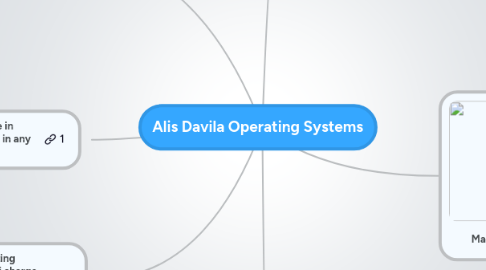
1. Definition: Operating Systems is software that controls the operation of a computer and directs the processing of programs (as by assigning storage space in memory and controlling input and output functions)
1.1. Market Share
2. Definition: Open Source: pertaining to or denoting software whose source code is available free of charge to the public to use, copy, modify, sublicense, or distribute.
3. Definition: RAM is a memory device in which information can be accessed in any order.
4. Windows 8
4.1. Pros
4.1.1. The biggest advantage of Windows is that it provides ready-made solutions that can be implemented by just about anyone who’s ever used a computer.
4.1.2. Microsoft Office is also 100% compatible with any file or document produced in the office space in America. In fact, MS Office isn’t compatible with other software and systems, so much as other software and systems strive to be compatible with Office!
4.2. Cons
4.2.1. The only other major disadvantage of using Windows in the workplace is that over 95% of all viruses and malicious software are written for the Windows OS. This means you have to double-down all security measures if you’re using Microsoft software across the board.
4.2.2. Even though Windows 8 have number of features, it fails to satisfy the expected consumer needs. In general Windows 8 means the user friendly but the Windows 8 fails that to so. Trade mark windows start icon is missing which make some part of the consumer unsatisfied. And the difficulty in shut downing the system irritates the use. And the difficulty in closing the live apps which runs in background are the major drawbacks.
5. Mac OS
5.1. Pros
5.1.1. Mac OS is the only commercial operating system that is custom-made to work with Apple’s hardware. This gives it a level of efficiency, power, and stability, which is most important for the workplace.
5.1.2. Mac OS X is still the operating system of choice for graphic artists, designers and most others who work with visual and audio media. It also synchronizes user information well across multiple Apple devices, such as the iPhone and iPad, making it easily usable in a mobile office environment.
5.2. Cons
5.2.1. Apple computers simply cost much more than your average PC. This is offset somewhat by those computers’ durability, and the fact that they take a long time to go out of date.
5.2.2. While it is true that you rarely hear of a Mac that has gotten a virus, they are not immune. Criminals simply don’t write malicious software for Macs very often. Don’t be taken in with a false sense of security!
6. Linux Ubuntu
6.1. Pros
6.1.1. Most versions of Linux are also easy to update and install. Operating from a single computer, the right Maryland software support personnel can implement and update dozens of computers over a single network in a matter of minutes. Linux software is also highly customizable–something that software services can make use of to make a network more secure.
6.1.2. Linux is completely free to install and use, you just have to find the distribution you want, download it, burn it to a CD or DVD, then install it completely free of charge.
6.2. Cons
6.2.1. Its biggest disadvantage is that its end-users and office workers are often scared of it at first. This is usually easily overcome with a morning of orientation and an afternoon’s worth of experience with the system. Perhaps more difficult is getting other managers or board members to approve the change. Fortunately, most IT departments will be happy to back up the decision!
6.2.2. Since most software is made for Windows only, Linux falls short here. However, there are often alternatives to some widely-used Windows programs.
